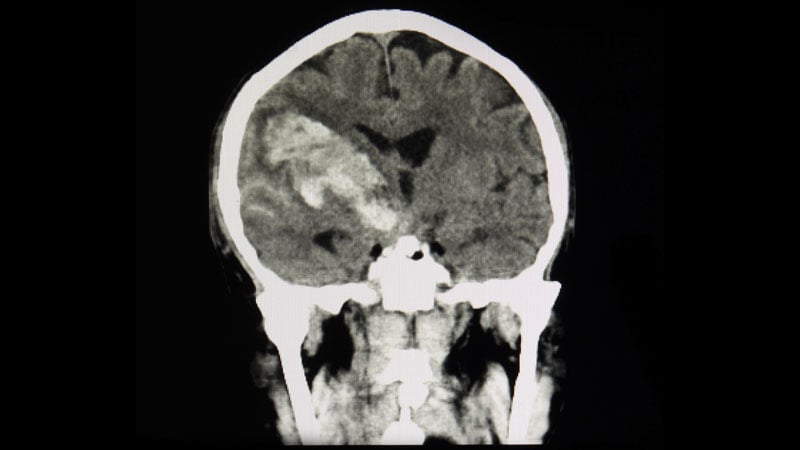The study covered in this summary was published in medRxiv as a preprint and has not yet been peer reviewed.
Key Takeaways
-
Patients with higher levels of stroke-induced brain disconnectivity, specifically involving the right superior temporal gyrus and right putamen, as seen on MRI, show poorer cognitive performance, as measured by Montreal Cognitive Assessment (MoCA).
-
Lesions affecting the insula and frontal operculum are also associated with cognitive impairment, supporting the study of structural disconnectivity when evaluating cognitive and functional sequelae in stroke patients.
Why This Matters
-
Stroke frequently causes cognitive impairment, and a better understanding of the underlying structural network dynamics may add to our current understanding of secondary effects distal from the focal lesion.
-
This study incorporated diffusion tensor imaging based tractography for full-brain connection analysis, which allowed the investigators to detail the connections on multiple lesions in individual patients and to match them to cognitive sequelae.
Study Design
-
The study included 102 patients with radiographically documented stroke, which was either subacute or chronic and either ischemic or hemorrhagic in nature.
-
Patients with psychiatric conditions, such as bipolar disease and schizophrenia, and other neurologic conditions, including pre-stroke cognitive impairment, substance abuse, or contraindications for MRI, were excluded.
-
Partial Least Squares analysis was used to map common variance between structural disconnection probability and patient performance on MoCA.
Key Results
-
Analysis on disconnectome maps revealed that higher disconnectivity in right insular and frontal operculum, right superior temporal gyrus, and right putamen was associated with poorer MoCA performance. Results indicated that lesions connected with these brain regions were more likely to cause cognitive impairment.
-
Disconnectivity within these clusters was negatively associated with multiple cognitive domains, most strongly with semantic and phonetic fluency. This demonstrated that the extent and distribution of structural disconnectivity are sensitive to cognitive defects after stroke.
-
MoCA score and total lesion volume were shown to be associated, but after removal of one participant with an extremely large lesion, the association between MoCA and lesion volume was not significant (t = -1.7; P = .09).
Limitations
-
The cross-sectional study design did not allow for premorbid cognitive function and chronic brain pathology to affect outcomes, which may have affected the prediction model.
-
The current group was heterogeneous regarding stroke severity, measures of vascular risk were lacking, and the sample size was moderate, preventing the ability to generalize reported findings to the stroke population.
-
The study did not allow differentiation between proximal and distal effects, owing to sample size.
Disclosures
-
The authors have disclosed no relevant financial relationships.
-
No commercial financial support for the research, authorship, and publication of this article has been declared.
This is a summary of a preprint research study, “Structural Disconnectome Mapping of Cognitive Function in Post-Stroke Patients,” written by researchers from the Division of Mental Health and Addiction, Oslo University Hospital and Institute of Clinical Medicine, University of Oslo, Norway, on medRxiv, provided to you by Medscape. This study has not yet been peer reviewed. The full text of this study can be found on medRxiv.org.
For more news, follow Medscape on Facebook, Twitter, Instagram, and YouTube.
Source: Read Full Article
